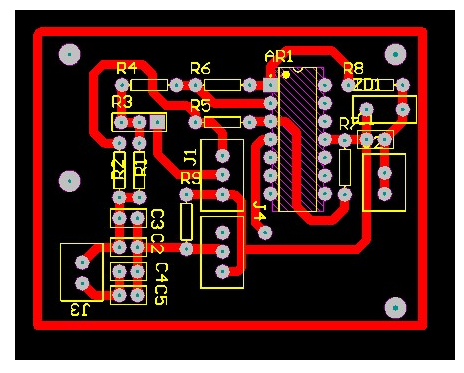1. Overview of FPC soft board automated production line
Know FPC
FPC single-layer soft board structure edit FPC single-layer soft board structure, the flexible board of this structure is the flexible board with the simplest structure, usually the base material + transparent glue + copper foil is a set of purchased raw materials, protective film + transparent Glue is another purchased raw material. First, the copper foil needs to be etched and other processes to obtain the required circuit, and the protective film needs to be drilled to expose the corresponding pads. After cleaning, use the rolling method to combine the two, and then electroplating gold or tin on the exposed pad part for protection. In this way, the big reaction is done. Generally, small circuit boards with corresponding shapes need to be stamped, and some solder masks are printed directly on the copper foil without a protective film, so the cost will be lower, but the mechanical strength of the circuit board will be worse. Unless the strength requirement is not high but the price needs to be as low as possible, it is best to apply a protective film.
Principle of FPC automated production line
1. Three single FPC films are compounded according to the designated position of the product

2. Using asynchronous die-cutting machine for die-cutting without gaps, and the principle of resetting the specified distance, pull the FPC film to the specified position.
3. According to the required shape, the die-cutting machine loads the mold and cuts the shape of the FPC film.
4. Then cut out the COVER shape and shape it.
5. Finally, the coil is shipped according to the requirements. If the sheet is to be shipped, a slicer is required to slice (on-line slice is also possible)
2. Introduction of traditional FPC soft board production method
Traditional FPC production equipment: punch
Production process: all manual production
Use mold: hardware mold
Production steps: single-layer punching of the hardware mold, one process for each layer, artificial hole-to-hole compounding, and then punching and forming on a punching machine, and the packaging is manually cleaned at the end.
The disadvantages of traditional FPC soft board
1. The method is single, and a lot of manual use increases the cost of manual use.
2. The process is complicated and frequent boarding and boarding increases the product loss and virtually increases the manufacturing cost.
3. The personal safety of employees cannot be effectively guaranteed when using mechanical punching presses.
4. The use of a large-area punch is difficult to ensure the cleanliness requirements of the product.
5. Manual compounding, the accuracy of product fit cannot be guaranteed uniformly.
Introduction of FPC soft board automated production process
Ready to work
a. Before starting the machine, check whether the rewinding and unwinding shafts, tension, and motors of the equipment can operate normally, and whether the meter data is displayed normally.
b. Ventilation must be completed when each host is turned on, and it must be checked whether the equipment can operate normally after being ventilated.
c. Check whether the materials are complete and the specifications meet the requirements.
d. Process the conductive adhesive.
Production Step 1:
The process itself has realized the bulk saving of the main materials through the material matching in the preparation work, why is asynchronous die cutting required?
Step 1 of production instructions:
1. The use of asynchronous die-cutting is a secondary saving of materials. In preparation, we have already produced a saving effect on the X-direction part of the material. Using asynchronous die-cutting, the main material can be saved again in the Y-direction, which is effective Achieve the largest savings in the production of main materials.
2. The use of asynchronous die-cutting can perform positioning and die-cutting of the conductive adhesive of the product itself, so that the conductive adhesive has precise positioning control in the FPC rubber sheet, and the accuracy of the product itself is higher.
Process extension:
If product tolerance requirements allow, one-size-fits-all production of products can be achieved, that is: in the preliminary preparation work, according to the Y-direction size requirements of the product, the position requirements are cut out to the rectangular size of the conductive adhesive, and then the main knife is directly die-cut to the outer frame forming.
Production Step 2:
According to requirements, multiple slices can be realized, or single slices can be made.
At the same time, stack collection is realized.
If you need to ship coils, you don't need a slicer, you can choose according to your own needs.